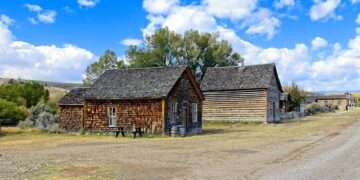In an era marked by growing political polarization and widespread skepticism toward scientific expertise, the relationship between politics and science is often portrayed as fraught and adversarial. However, a recent feature in High Country News challenges this conventional narrative, arguing that politics and science not only can coexist but also must collaborate to address the complex environmental and social issues facing our world today. This article explores how bridging the divide between scientific research and political decision-making is crucial for crafting effective policies that balance ecological sustainability with community needs.
Bridging the Divide Between Political Agendas and Scientific Research
In an era marked by polarization, aligning political objectives with scientific findings is crucial yet challenging. Often, political rhetoric oversimplifies complex research, causing critical data to be overlooked or misinterpreted. However, recent efforts illustrate that collaboration between policymakers and scientists can yield policies that are both effective and grounded in evidence. This fusion requires transparent communication, mutual respect, and a shared commitment to public welfare rather than partisan interests.
Successful integration depends on creating frameworks that encourage continuous dialogue. Key components include:
- Accessible scientific briefs tailored for legislative audiences.
- Interdisciplinary advisory boards involving experts from diverse fields.
- Regular public forums where community concerns meet scientific insights.
| Initiative | Impact |
|---|---|
| Science Policy Fellowship | Improved legislative decision-making |
| Climate Data Sharing Portal | Enhanced transparency & access |
| Biannual Science-Public Forums | Increased community engagement |
How Collaborative Policy Making Enhances Environmental Outcomes
Bridging the often polarized worlds of politics and science, collective decision-making processes tap into diverse perspectives, leading to more robust environmental policies. When policymakers, scientists, local communities, and stakeholders come together, the resulting strategies are better equipped to address complex ecological challenges. This synergy fosters transparency and trust, ensuring that scientific evidence isn’t sidelined by political agendas but instead shapes actionable solutions that resonate across societal divides.
Key benefits of this cooperative approach include:
- Enhanced data integration: Combining scientific insights with on-the-ground experiences results in policies that are both evidence-based and contextually relevant.
- Increased accountability: Diverse stakeholder involvement holds decision-makers responsible, reducing biases and improving long-term environmental stewardship.
- Adaptive management: Ongoing collaboration promotes iterative policy adjustments as new scientific findings emerge or environmental conditions evolve.
| Collaborative Element | Impact on Environmental Outcomes |
|---|---|
| Scientific Advisory Panels | Ensures evidence-based approaches |
| Community Forums | Incorporates local knowledge and values |
| Policy Feedback Loops | Allows for timely adaptations to strategies |
Strategies for Integrating Scientific Expertise into Legislative Processes
Bridging the gap between scientific knowledge and policymaking demands deliberate frameworks that facilitate ongoing collaboration. One effective approach involves creating permanent advisory panels comprising experts across diverse fields, ensuring legislators have direct access to current, evidence-based insights. Embedding science liaisons within legislative offices also nurtures understanding and translation of complex data into actionable policies. Moreover, fostering a culture of science literacy through continuous education programs tailored for policymakers establishes a strong foundation for informed decision-making.
Integrating scientific expertise also benefits from institutional mechanisms that encourage transparency and accountability. Legislatures can adopt structured consultation processes before enacting laws, including public hearings with scientists and stakeholder roundtables. Collaborative platforms, supported by digital technologies, enable real-time data sharing and scenario modeling to evaluate potential outcomes. The table below illustrates key strategies alongside their intended impact in strengthening science-informed governance:
| Strategy | Impact |
|---|---|
| Permanent Advisory Panels | Continuous expert input throughout legislative cycles |
| Science Liaisons in Offices | Improved translation of research into policy language |
| Legislator Science Literacy Programs | Enhanced understanding of complex scientific issues |
| Structured Consultations & Hearings | Inclusive, transparent decision-making processes |
| Digital Collaboration Platforms | Timely data access and scenario analysis |
To Conclude
As the intersection of politics and science continues to shape critical decisions, the dialogue between policymakers and researchers remains essential. High Country News highlights how collaboration, transparency, and respect for evidence can bridge divides, fostering informed strategies for addressing complex environmental and societal challenges. In an era of rapid change, the integration of science into political discourse is not only possible but imperative for the public good.
















![[News] Japan Develops 10nm Nanoimprint Technology, with Potential to Tackle EUV Bottleneck – TrendForce](https://earth-news.info/wp-content/uploads/2025/12/329851-news-japan-develops-10nm-nanoimprint-technology-with-potential-to-tackle-euv-bottleneck-trendforce-360x180.jpg)














